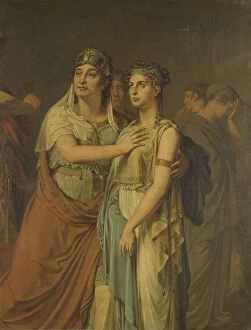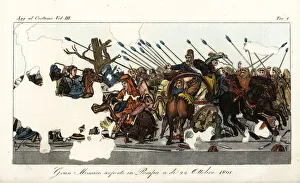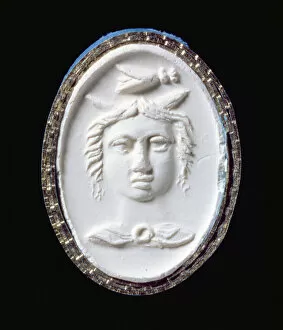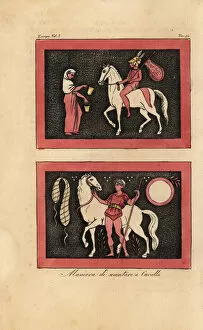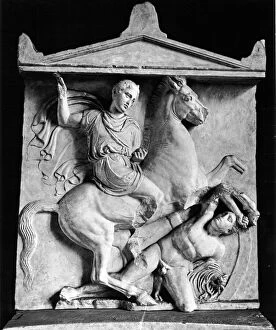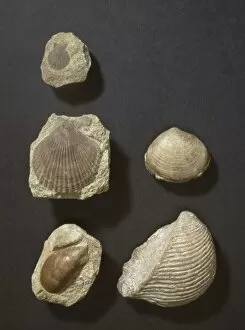Chlamys Collection
"Chlamys: The Ancient Greek Method of Mounting and Riding a Horse" In the realm of equestrian prowess, the chlamys stood as an emblematic symbol of skill and power
All Professionally Made to Order for Quick Shipping
"Chlamys: The Ancient Greek Method of Mounting and Riding a Horse" In the realm of equestrian prowess, the chlamys stood as an emblematic symbol of skill and power. Originating in ancient Greece, this method of mounting and riding a horse showcased the agility and finesse possessed by its practitioners. From Charlemagne, also known as Charles the Great, King of the Franks and Emperor of the Romans, to Louis the Pious, his son who co-ruled with him, these influential figures embraced the artistry behind maneuvering atop their noble steeds. Even Lothair II, King of Lotharingia and descendant of Emperor Lothair I himself, found solace in mastering this technique. The chlamys was not only reserved for kings but extended its influence to Byzantine Emperors on their thrones. Guarded by loyal sentinels brandishing spears and shields, they exuded authority while donning this distinctive attire. Its significance transcended mere horsemanship; it became intertwined with regal traditions. Heads adorned with crowns were accompanied by cloak buckles that secured these majestic garments in place. A large marble mosaic discovered in Pompeii further immortalized its grandeur when unearthed on October 24th, 1801. Not limited to ceremonial occasions alone, even coronations witnessed ancient Italian kings being anointed by archbishops while wearing their chlamyses – a testament to both style and sovereignty. This captivating practice left impressions throughout history - golden rings featuring facing heads served as reminders of its enduring legacy. And let us not forget Dexileos' funerary stele from 394 BC; it depicted him poised upon his horse ready to strike at any moment - forever capturing his mastery over mounted combat. Thus we delve into an era where horsemanship met elegance.

